Bhogali Bihu: A Festival of Abundance
Bohagote amare aai mohura hoi ghure
Maghot xunor haatere lakhimi aadore
Xorot nixai torare xojai aair e kexh
Bharatore purba dixhor surya utha dexh
“In (the month of) Bohag, mother dances and whirls with grace like a mohura (spool of thread).
In Magh, she welcomes the goddess of prosperity.
She adorns her tresses with the stars of the autumnal sky of Sarat.
She is the land of the rising sun.”
These evergreen lyrics from a song by the late Dr. Bhupen Hazarika aptly capture the beauty and spirit of the land of Assam that lies in the eastern part of the Indian subcontinent. The song represents the deep interconnect between nature, culture and civilization of the region. The festival of Bihu, and its integral relationship with agriculture and fertility, is of utmost significance to the culture and heritage of Assam. Magh Bihu or Bhogali Bihu is a celebration of bountiful nature and abundance. It is also an occasion for the people of Assam to enjoy (bhog kora) and share in the gifts of nature as a community, and to strengthen a sense of identity and belonging. The spirit of indulgence and sharing is manifested in the numerous delicacies, snacks and savouries that are prepared and relished during the festival.
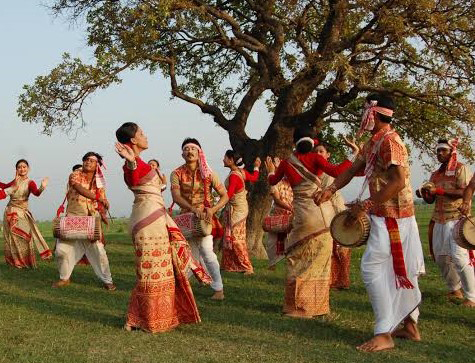
Bohag Bihu is marked by dances, songs and merrymaking.
(Image source: Wikimedia Commons)
The festival of Bihu has three forms: Bohag Bihu, Kati Bihu and Magh Bihu, each of which coincides with crucial events in the agricultural calendar of the region. Bohag Bihu (celebrated in mid-April) signals the onset of spring and the beginning of the crop-planting cycle. Kati Bihu (October) is observed as a day of prayer for a good harvest. Magh Bihu (mid-January) marks the completion of the agrarian cycle after the harvest has been reaped.
Magh Bihu is celebrated on the cusp of Magh, i.e., the last day of the month of Pooh or Pausa (as per the lunar calendar). It is also called Domahi or the confluence (samahar) of two months. This day is considered auspicious in the Hindu lunar year and is known as the Makar Sankranti, i.e., the day when the sun begins its northward journey or Uttarayan and transitions into the Hindu zodiac sign of Makara. On this day the Sun God is worshipped in various parts of India in the form of different festivals such as Pongal (Tamil Nadu), Maghi (Punjab) and Uttarayan (Gujarat).
Antiquity
Harvest festivals are as old as human civilization itself and are rooted in the human desire to harness nature’s fertility through various rites and rituals. The origin of Bihu is hence difficult to establish. The festival of Bihu is primarily linked to the cycle of paddy cultivation. Hence it has evolved along with the development of rice cultivation in Assam. A number of present-day Bihu rituals such as ancestor-worship, and dances and songs evoking fertility, are believed to be the cultural remnants of the beliefs and practices of certain indigenous tribes of the region like the Khasis. The most significant contribution to the cultivation of paddy in the region was made by the Ahoms who came to Assam in the 13th century CE. The Ahoms revolutionised the cultivation of paddy in the Brahmaputra valley by introducing Sali-kheti or wet rice cultivation (in place of the earlier Ahu technique which did not require standing water on the field). The three forms of Bihu today revolve around the cycle of Sali cultivation. The Ahoms also institutionalised and popularized the celebration of Bihu. During Magh Bihu, various games and contests were held on the royal grounds of Rang Ghar (see our story on Sivasagar).
Rituals and Practices
A spirit of harmony and togetherness pervades every aspect of Bhogali Bihu. On the night of Uruka (the day before Magh Bihu), the people of the village (raiz) feast together in a Bhelaghor, a temporary structure created out of bamboo, wood, hay and nora (leftover stumps of paddy). Another structure built for Magh Bihu is the Meji: a tower prepared out of bamboo, wood, and hay. These are built either on the ground of a Namghar (community prayer-house) or the sutal (courtyard) of a chosen household. It is important to note that these structures are built through the combined efforts of the people of the village. Keeping true to the community spirit of the festival, each household contributes raw materials (as per its capacity) for the festivities. Another age-old tradition observed on the day of Uruka is that of fishing, in which the people of a village fish together in a river or a community pond. The fresh catch goes towards the preparation of various delicacies for the Uruka feast. A unique and fun-filled tradition of Magh Bihu is that of stealing, indulged in mostly by young boys of the village. Items of theft may include hay, bamboo, and vegetables and fowl for the feast. However, such acts of mischief are generally overlooked as everyone is in a generous and festive mood. After the feast, the night is spent in reminiscing and sharing of stories around bonfires.
On the next day, i.e. Magh Bihu, people brave the chills of the freezing winter morning to witness the burning of the Meji. Rice, pulses, ghee and Pithas (snacks) are poured into the fire as offerings to the sun-god. The burning of the Meji symbolises the triumph of light over darkness, and life over death. Certain ethnic communities of Assam such as the Sonowal Kacharis, Dimasas and Rabhas associate the burning of the Meji with ancestor worship. In this context, the Meji represents the epic warrior Bhisma’s (the grand-ancestor of the royal house of Kurus) funeral pyre. Legend has it that Bhisma, blessed with the boon of wilful death, decided to abandon his mortal body only after the sun had transitioned to Uttarayan. Thus, the fire of the Meji also represents a channel for communicating the blessings of the ancestors for the welfare of the community.
As the flames engulf the Meji, the people chant: Pooh gol Magh hol, amar meji joli gol
“The Meji burns away as Pooh bids adieu and Magh descends”.
The thunderous sound of Pani-hilois (a piece of water-filled green bamboo that bursts like a cannon when put into fire) declares the end of the winter and the triumphant onset of Magh.
The ritual of Magh-bondha, or the tying of straw around Lagani-gos (fruit-bearing trees) is believed to enhance their fertility. Pieces of straw are also tied to the granary (bhoral-ghor) and cowshed (guhali) and the practice is believed to foster overall prosperity of the household. Various kinds of Ja-jolpan and Pitha-pona (snacks and savouries) are consumed during the day. The young seek the blessings of the elders. Various exciting games such as: Tekeli-bhonga (hitting a drum blindfolded), Rosi-tona (tug of war) and Godhur-bostu-doliuwa (shot put) further intensify the festive fervour. Traditionally, Moh-juj (buffalo fight), Kukura-juj (cock fight) and Bulbuli-juj (Indian bulbul fight) also used to be held; but these have mostly been discontinued during modern times. The day is also spent in practicing nama-kirtana (offering prayers) in the Namghar. In various parts of Assam, several fairs are also held on the occasion of Magh Bihu such as, the Jonbeel Mela of Dayang Belguri (Morigaon district), and Maghi Mela of Banglipara (Barpeta district). These fairs have traditionally enabled the exchange of resources amongst different villages and communities.
Bhogali Delicacies
The chief highlight of this festival are the countless delicacies prepared for the occasion, the quintessential among them being the Pithas. In the days leading up to Magh Bihu, the sound of the Dhenki pervades the atmosphere of rural Assam, and many a Bihu song has been inspired by the phenomenon. The Dhenki is a wooden pounding device used for threshing paddy and grinding rice, and is integral to most rural Assamese households. Pithas are traditionally prepared by the womenfolk of the region. The process starts days ahead of the actual festival and is itself an occasion for the women to socialise and bond. Preparing Pithas is itself an art. For example, Sira (flattened-rice) grains are supposed to be teteli-potiya, i.e., as flat and fine as the leaves of a tamarind tree. The pounding of every item (such as flattened rice, rice-flour etc.) is to be done with utmost care and requires specific intensity and technique. Although the pounding of rice is a demanding task, the laughter, gossip and festive spirit involved keeps everyone energised.
The base ingredient for Pithas is mostly rice, of which Assam boasts of several exotic varieties. Some varieties used for Bhogali snacks are: Bora-dhan, Malbhog-dhan, Beji-Dhan and Sokua-dhan. Pithas are prepared out of Pithaguri (rice-flour), Til (sesame), Gur (jaggery), Narikol (grated coconut), Muri and Akhoi (varieties of puffed rice). One of the most unique delicacies prepared on the occasion of Magh Bihu is Sunga-pitha. Cylindrical pieces of bamboo are stuffed with equal parts of Bora-saul (sticky rice that has been soaked overnight) and water, and the ends are sealed with straw. These are then rested on an iron stand and a fire is lit from below using hay. The fire is kept going till the outermost layer of the bamboo is burnt and the Pitha is fully cooked. The Pitha is extracted by cracking the bamboo open and thereafter relished with curd, cream and jaggery. Another variety of Sunga-pitha is prepared with rice-flour mixed with jaggery.
Pithas are also prepared by stuffing and rolling sesame or coconut mixed with jaggery into layers of rice-flour (much like a dosa). These are known as Til-pitha (with a sesame filling) and Narikol-pitha (with a grated coconut filling). Ghila-pitha are dumplings prepared by frying a paste of sticky rice flour and jaggery in mustard oil and is similar to the well-known malpua. Another delectable sweetmeat is the Tekeli-mukhot-diya-pitha prepared by steaming rice-flour mixed with grated coconut and jaggery, tied in small bundles of cloth. Khola-sapori-pitha is prepared by frying a runny batter of rice flour and salt into thin discs over an earthenware pan called Khola. A variety of Laru or laddoos is also prepared using coconut, sesame, jaggery, puffed rice and rice flour.
Various types of delectable Jolpan (a light meal) are also enjoyed on the day of Bhogali Bihu. Sandoh-guri (a variety of porridge) is prepared by mixing coarsely ground roasted rice with jaggery and milk. Komal-saul (a unique variety of rice that turns soft and fluffy on soaking) and Bora saul (sticky rice), mixed with Doi (curd) and Gur are other delightful Jolpan combinations. These dishes are not only enjoyed during Magh Bihu but also constitute traditional breakfast items of the region. Another preparation especially enjoyed on Magh Bihu is Mah-karai, a crunchy mixture of roasted rice, sesame, black gram and dried ginger.
Over time, the festival of Magh Bihu and the rituals and practices associated with it have changed considerably. Although Assam’s economy is still primarily agrarian, many families have given up farming and moved to the cities. Being essentially a harvest festival, the resonance of Bihu alters when removed from a rural-agricultural setting. For many city-dwelling families, the celebration of Bihu is hardly a community event. Electrical kitchen appliances have replaced traditional methods of preparing Bihu delicacies which requires teamwork and collaboration. Packaged Pithas have similarly replaced home-made ones. Traditions, customs and rituals are dynamic by nature. They inevitably continue to evolve, to keep pace with the times. Despite all changes, at the heart of Bhogali Bihu lies a spirit of gregariousness. It is an occasion for the Assamese to thank nature for its boundless gifts, to appreciate sustainable living practices, to enjoy and share resources as a co-dependent society, and to strengthen a sense of belonging to the community.
 Government of India
Government of India






























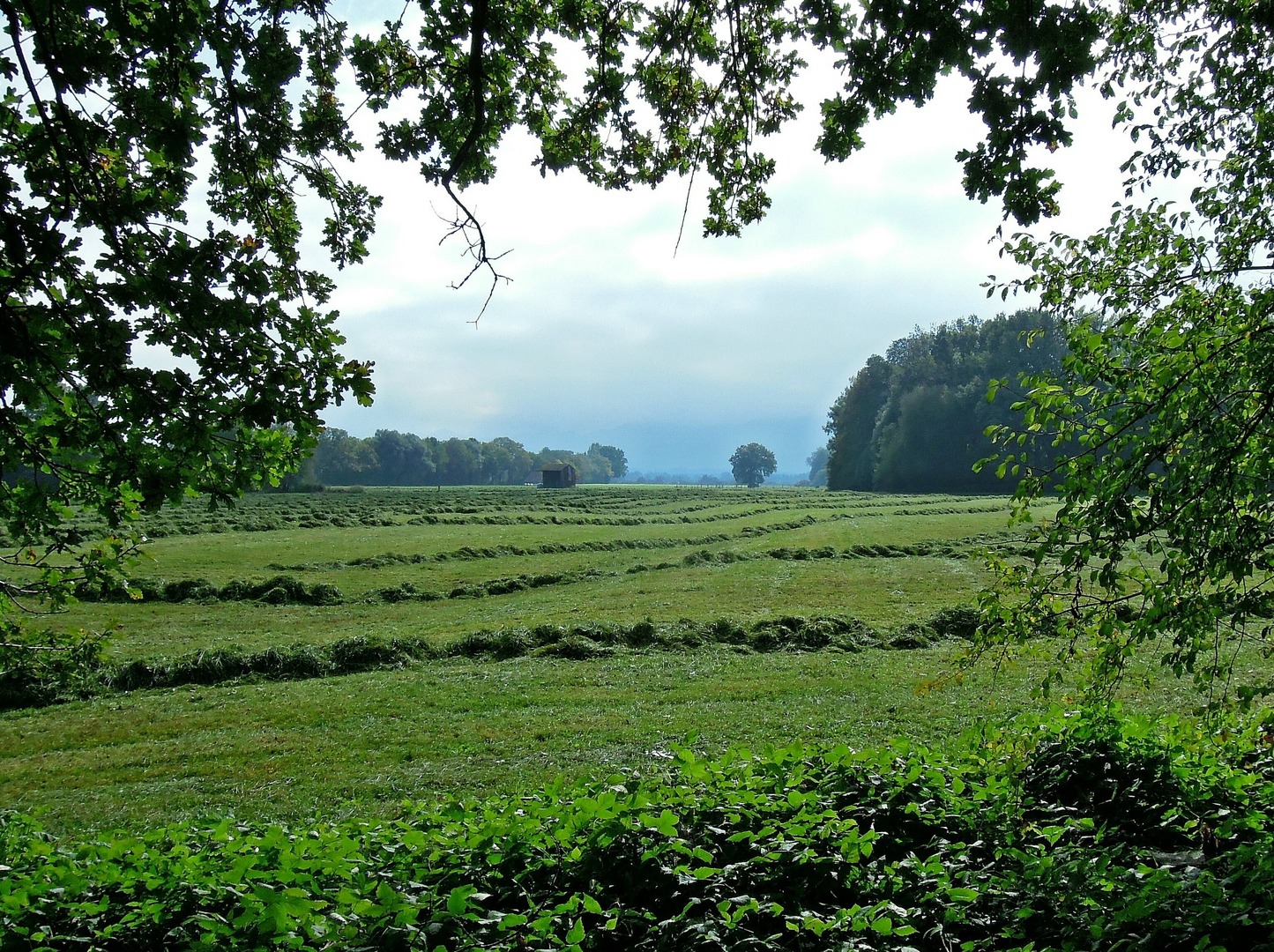

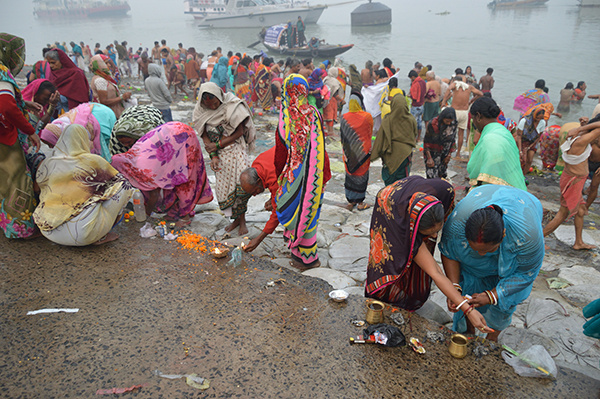
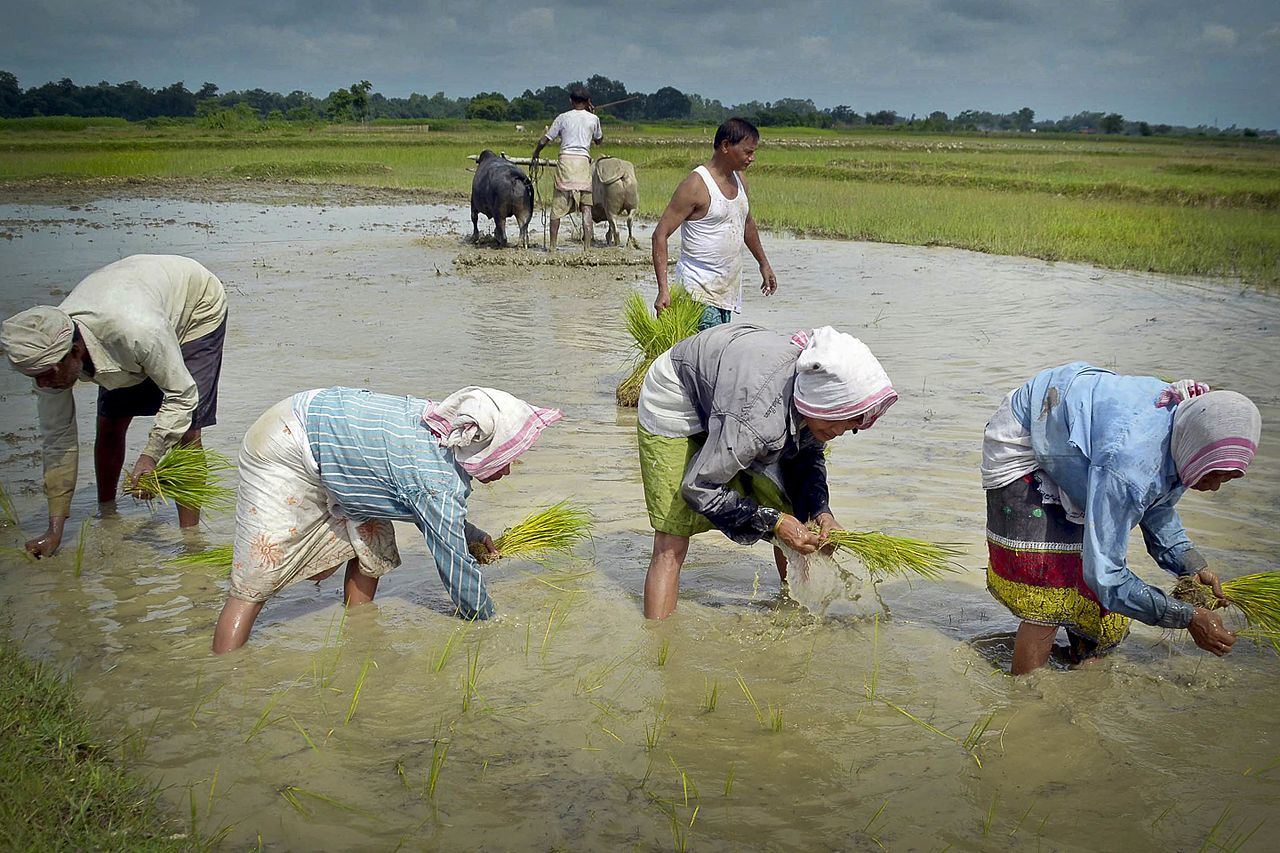

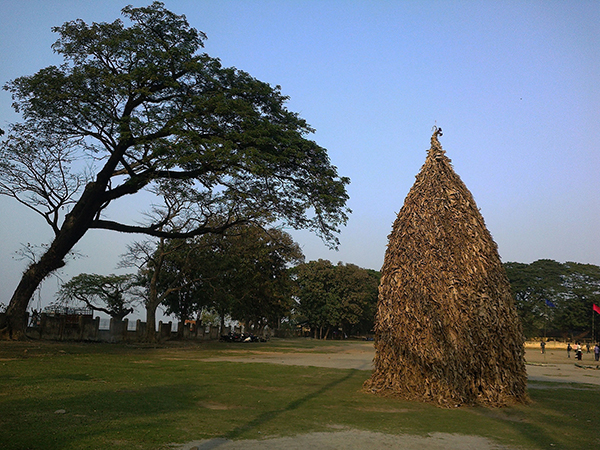
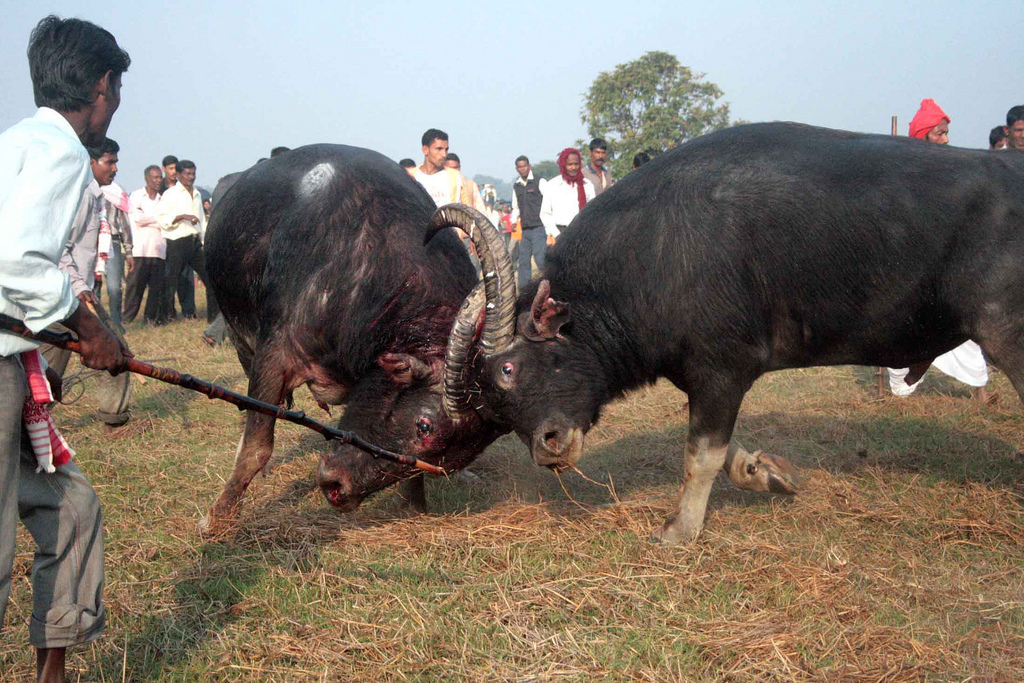
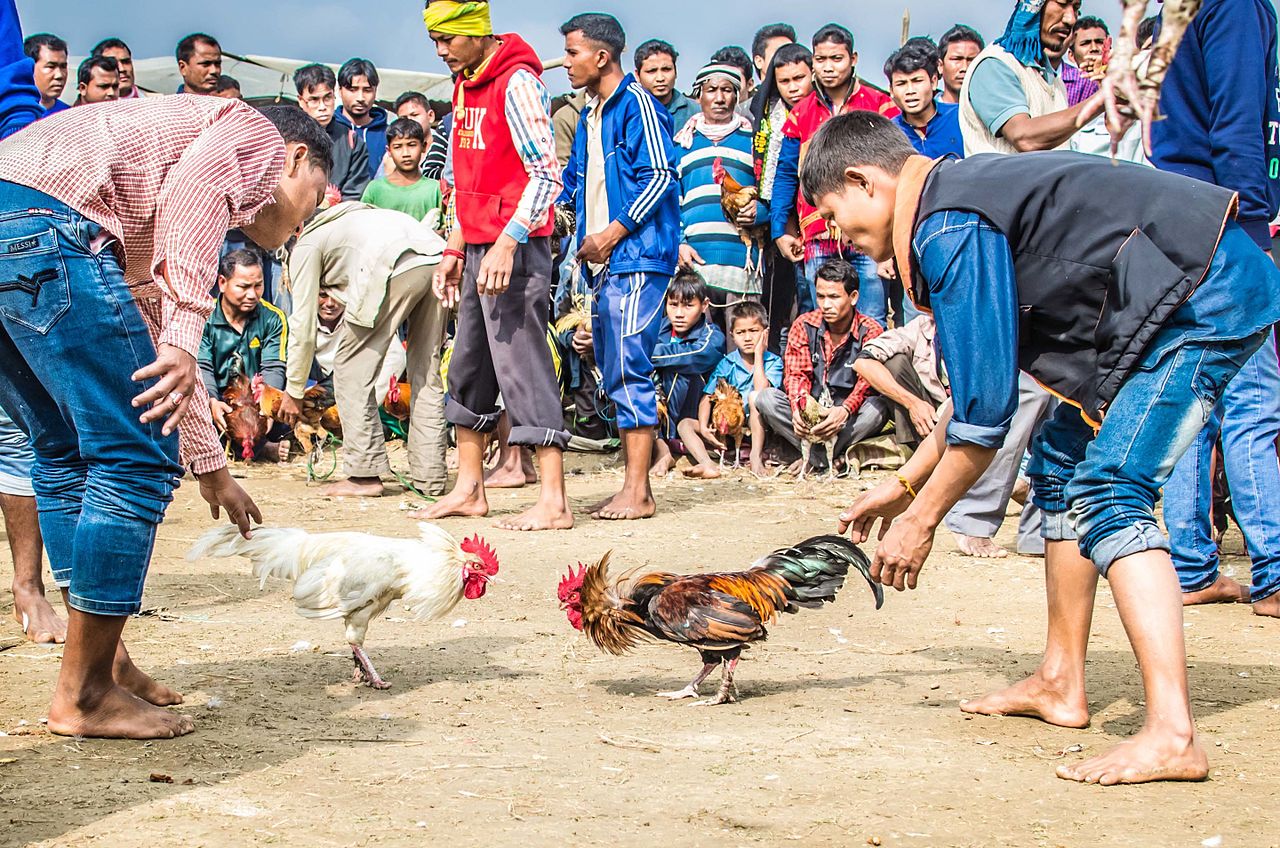
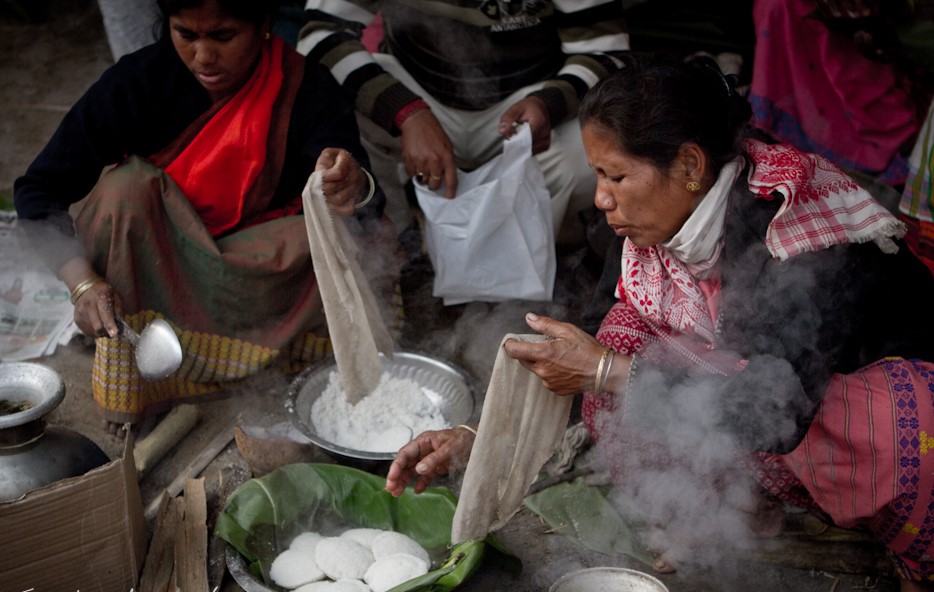
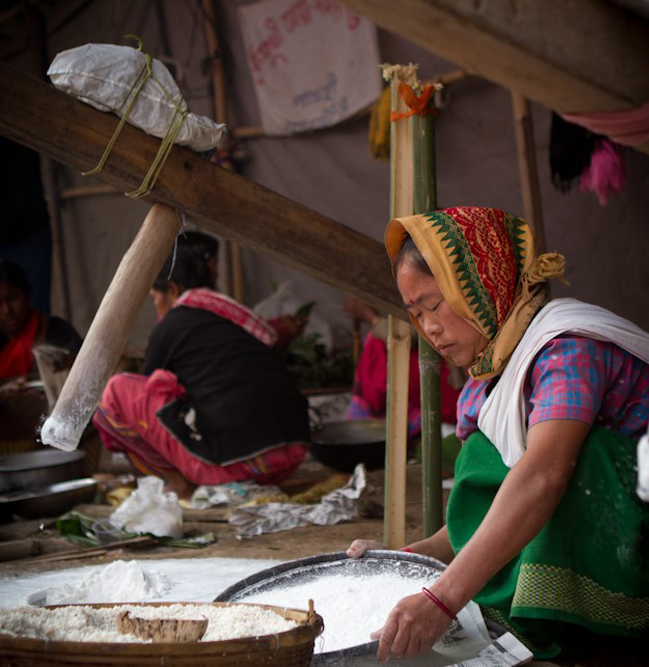
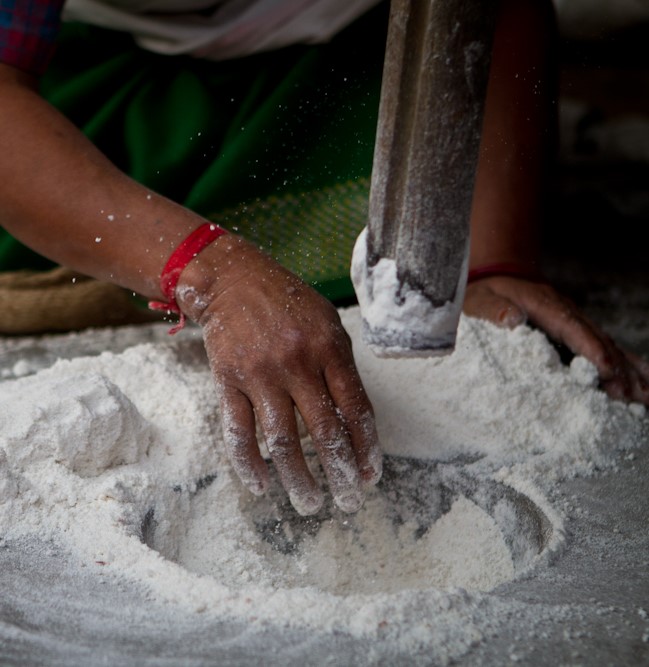

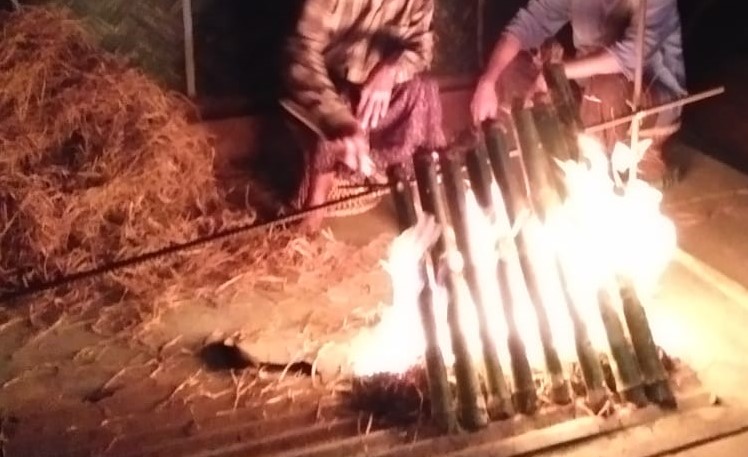

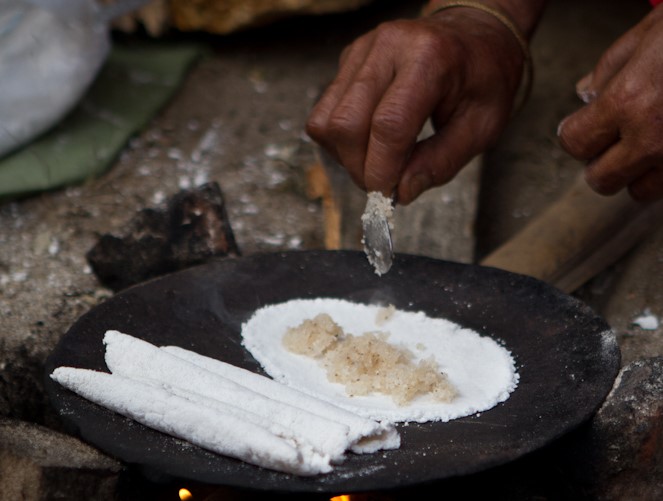
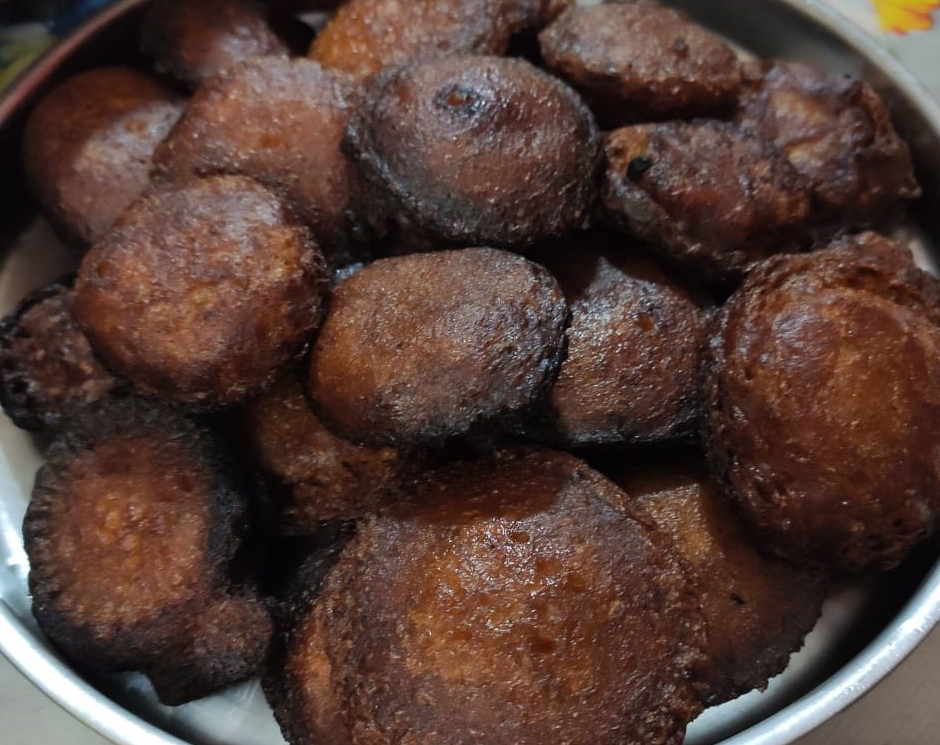
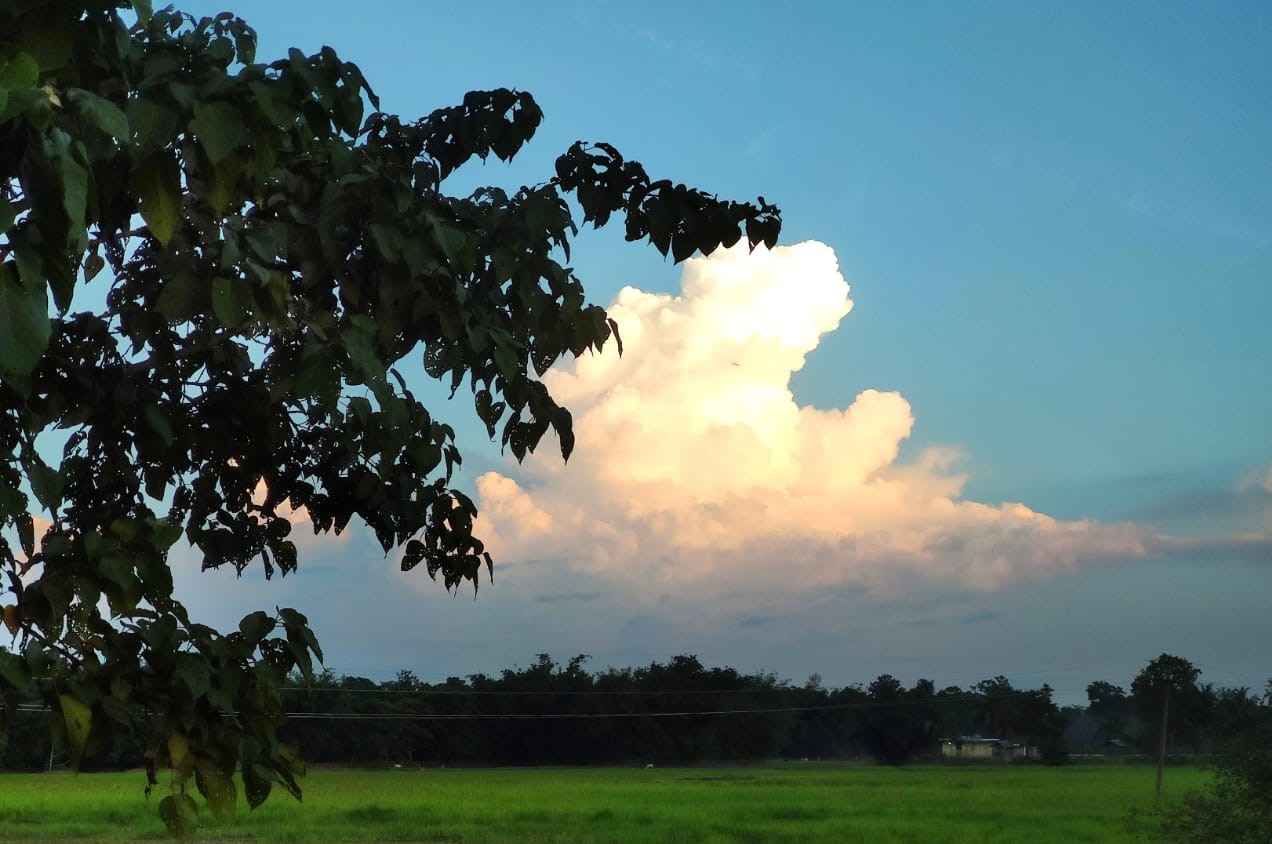


 Recognizing the ongoing need to position itself for the digital future, Indian Culture is an initiative by the Ministry of Culture. A platform that hosts data of cultural relevance from various repositories and institutions all over India.
Recognizing the ongoing need to position itself for the digital future, Indian Culture is an initiative by the Ministry of Culture. A platform that hosts data of cultural relevance from various repositories and institutions all over India.

